OVERVIEW:
Around the world tea is the most popular drink next to plain water, but very few people have visited the hillside gardens of Asia where it grows. Fewer still have drunk tea they have picked and processed with their own hands. Now is your chance. Join us this May at the peak of the spring harvest season as we explore the history, culture and manufacture of tea in Japan - from the old imperial capital of Kyoto to the historic tea city of Uji to the tea fields of Wazuka (right).
TOUR HIGHLIGHTS:
1. The tour begins in Aichi prefecture as we check into an authentic ryokan (traditional Japanese inn) with sea views, tatami rooms and hinoki soaking tubs (right).
2. On the first day we'll be visiting some of the famous ceramic studios and pottery shops of Tokoname. After lunch it's off to Nishio for a drive through covered tea fields and visits to two historic tea temples and the Aoi matcha factory for a V.I.P. tour and tea tasting (below).
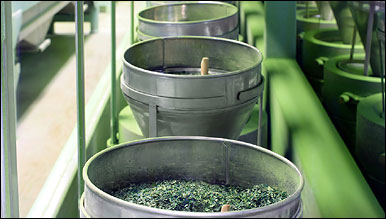
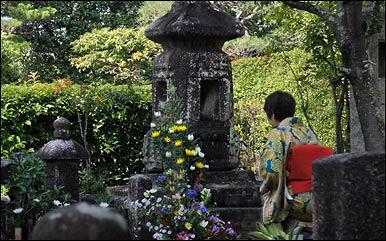
5. Next door is Daisen-in whose celebrated garden was inspired by Song dynasty Chinese landscape paintings and includes a dramatic raked stone Zen meditation garden (right). Later, tea will be served at sub-temple Koto-in over-looking its famous moss garden, followed by a Buddhist vegetarian meal at Daiji-in.
6. Before bed visit the local sento ("public bath") for a unique slice of daily life in Japan. Amenities include sauna, whirlpool, "milk bath", cold plunge pool, outdoor hot tub, and the mysterious denkiburo ("electric bath").
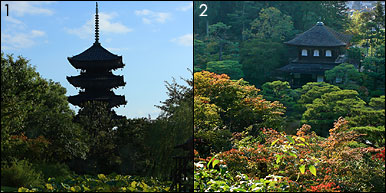
9. Lunch today is at a conveyor sushi restaurant - a fun and tasty experience where countless plates glide past your seat for the choosing.
10. Just a block from the "sushi-go-round" is the workshop of one of Uji's last cha bako ("tea box") makers. We'll see the materials, tools and methods employed in this traditional craft (below).

13. The next day we set out for historic Kanazawa on the Sea of Japan - one of the country's best-preserved cities of the Edo-period (1603-1867). Kanazawa is famous for its seafood, gardens, temples, shrines, and its samurai and geisha districts. After checking into our ryokan and breaking for lunch, we will be visiting a kutani-ware kiln (below 1) and a gold leaf factory that has recreated the famous Golden Tea Ceremony Room (below 2) of Toyotomi Hideyoshi (1536-1598).
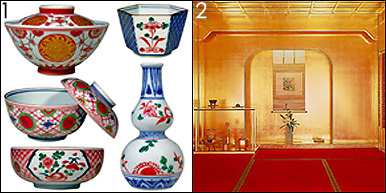
15. The next morning, as Tea Tour-only travelers depart for the airport, those on the optional Gifu Prefecture Tea & Hot Spring Extension will set out for Kawabe - where we will meet Tea Master Miyoko Hiraoka for a chanoyu (tea ceremony) workshop (right). Madame Hiraoka was educated in the Urasenke tradition - one of the three original tea schools established in the 17th century by the grandsons of Sen Rikyu. The workshop will include the proper etiquette for host and guests, familiarization with the tools and teaware of the tea ceremony, and instruction on preparing, serving and drinking matcha. This is a rare opportunity to meet and learn from a master of chado - the Japanese way of tea.
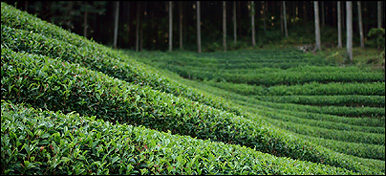
18. After breakfast the next day we'll visit an ashinoyu (hot spring "foot bath") and spend the afternoon at the Karukaya onsen (natural hot spring) (below).
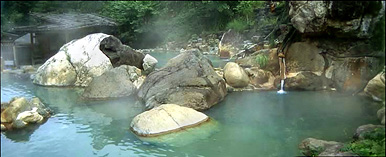
20. A return visit to Karakaya for an afternoon soak followed by a farewell dinner ends the day and the Tea and Hot Spring Extension.
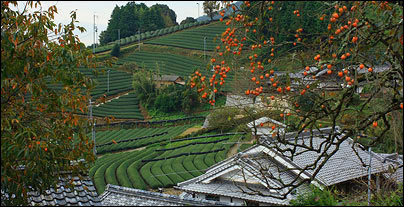
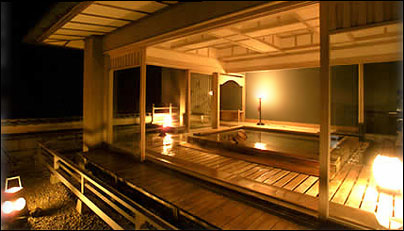
3. The next morning we board the Bullet Train to Kyoto on the Tokaido line - the world's first high speed rail line.

4. In Kyoto we'll be checking into a traditional courtyard guest house and then walking to nearby Daitoku-ji - one of the world's largest Zen temple compounds, comprising over 20 sub-temples - many with links to Japanese tea history. The most significant is Juko-in - where we will be making a pilgrimage to the grave of Japan's greatest tea master, Sen no Rikyu (1522-1591) (left).

7. Day 5 (Saturday) is a free day in Kyoto. Return to Daitoku-ji for morning meditation or visit some of the other historic buildings and sub-temples open to the public. For a vegetarian lunch, return to Daiji-in for a simple bento box or elaborate kaiseki meal, or visit the Nishiki Koji food market and eat your way through the "Kitchen of Kyoto". Other notable temples in the city include To-ji (left 1) whose iconic pagoda is the tallest in Japan, and Ginkaku-ji, the "Silver Pavilion" (left 2) whose 4½ mat tearoom is believed to be the original model for all later designs.
8. After Kyoto it's on to the historic tea city of Uji. The first stop here is Byodo-in (below) - an ancient temple whose 950-year-old "Phoenix Hall" is not only a National Treasure and World Heritage Site, but also appears on the back of the 10 yen coin (below). A formal tea presentation will follow at the nearby Taiho-an tea ceremony house.
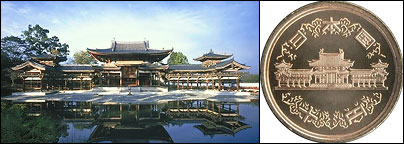
11. After a short train journey, the group will arrive in the tea town of Wazuka (top) where we will check into our ryokan before dinner and a bath.
12. After breakfast the next day, we will spend the morning harvesting and processing tea the old-fashioned way: by hand. (The finished tea will be distributed to the group.) After a box-lunch, we will be tasting tea competition-style and then visiting a small mountain-side tea factory to see how top-quality tea is processed today (below).
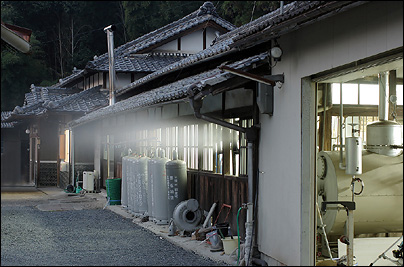
14. The last day of the tour will begin with a special breakfast before setting off for Nagoya. In the afternoon we will pay a visit to Nagoya Castle (right) and then return to the ryokan where our trip began.
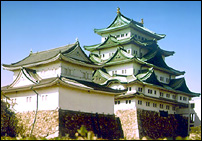
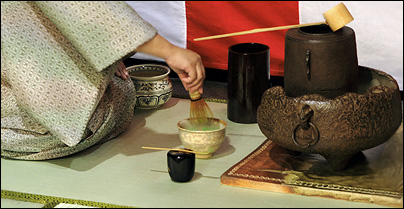
16. After lunch we travel to Shirakawa to visit an organic tea farm to learn about and sample organic tea (left).
17. We will be spending the next three nights in the beautiful mountain city of Takayama (below).
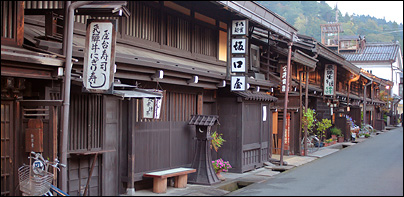
19. For the final day of the tour we'll be visiting a riverside hot spring in the morning and then riding a cable car into the "Japanese Alps" (right) to take in the spectacular views and an alpine forest nature walk.

